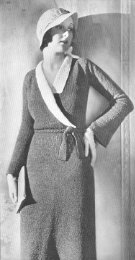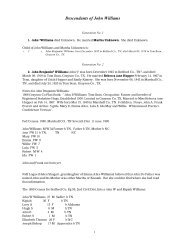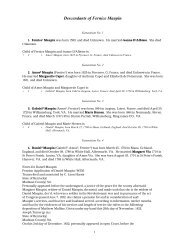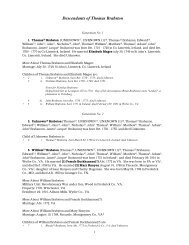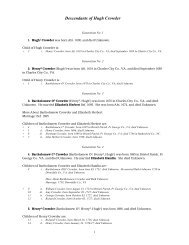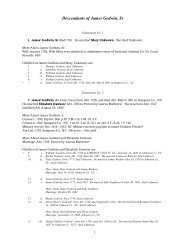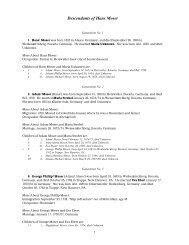TABLE of CONTENTS - Cemetarian
TABLE of CONTENTS - Cemetarian
TABLE of CONTENTS - Cemetarian
You also want an ePaper? Increase the reach of your titles
YUMPU automatically turns print PDFs into web optimized ePapers that Google loves.
About Dating Vintage Sewing Patterns<br />
The pattern number is only ONE indicator <strong>of</strong> the date on vintage sewing patterns. You<br />
can’t use the number alone because the companies would start over again when they got<br />
to a certain level. You must consider the general silhouette <strong>of</strong> the clothing along with<br />
other factors such as hair, price, sizing and envelope style and logo placement you can<br />
get pretty close to the issue or copyright date. Please be aware that even if a pattern is<br />
dated, it could have been in production for years and could even be a re-release <strong>of</strong> a<br />
previous number.<br />
Style eras <strong>of</strong>ten crossed decade lines. For instance it is very difficult to tell a 1938<br />
pattern from a 1941 pattern. The basic style and design elements were the same. The<br />
same thing applies for 1959-1961 and again in the 60s and 70's. There is more<br />
difference between 1964 and 1967 that there is between 1969 and 1971.<br />
Besides the general look and art work <strong>of</strong> vintage patterns, the sizing can be a very good<br />
indicator. In the beginning <strong>of</strong> Home Patterns, the bust measurement is <strong>of</strong>ten the only<br />
measurement given. By the 1940s patterns gave bust and hip measurements but <strong>of</strong>ten<br />
the waist was not given (due to the fact that the sewist could change that element).<br />
Until 1956 a Size 12 was for a 30 inch bust. In 1956 sizing changed and a Size 12 was<br />
for a 32 inch bust. In mid 1967 the standard changed once again and a Size 12 became a<br />
34 inch bust and remains so today. So if you are trying to date something near the year<br />
<strong>of</strong> size change, the size can be a great clue.<br />
After several years selling and handling old sewing patterns and catalogs, I have<br />
compiled this list <strong>of</strong> dates and pattern numbers. Since most patterns are not printed<br />
with the copyright information on them this list is computed using information from<br />
magazines, pattern books and other published sources. The best I can do most <strong>of</strong> the<br />
time is assume that if a pattern is published in a catalog that is it's date <strong>of</strong> release.<br />
There are <strong>of</strong> course crossovers and some patterns are rereleased. So there is definitely<br />
room for error in my calculations.<br />
This guide is meant as just that.......A GUIDE. It is not a definitive copyright date<br />
source.




